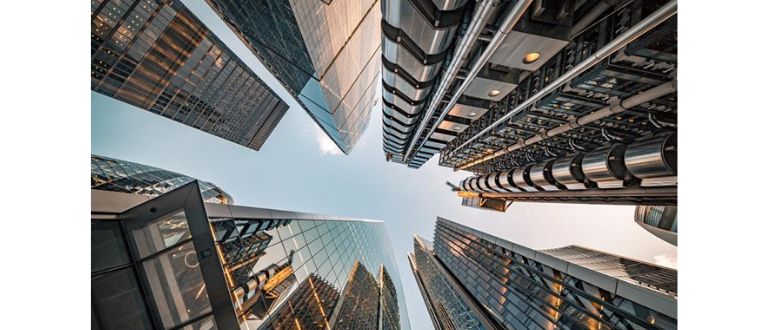Commercial real estate represents a diverse and dynamic sector of the property market, encompassing a wide range of property types, including office buildings, retail spaces, industrial warehouses, and more.
Whether you’re an investor looking to diversify your portfolio, a business owner in need of a new location, or a developer seeking to capitalize on emerging trends, the world of commercial real estate offers a wealth of opportunities.
In this article, we’ll explore the nuances of commercial real estate, its various asset classes, and the key factors to consider when navigating this thriving market.
Understanding Commercial Real Estate: An Overview
Commercial real estate refers to properties used primarily for business purposes, as opposed to residential properties used for living purposes. The commercial real estate market is driven by factors such as economic growth, demographic trends, and industry dynamics, making it highly dynamic and responsive to changes in the business environment.
Diverse Asset Classes: Exploring the Spectrum of Commercial Real Estate
Commercial real estate encompasses a wide range of asset classes, each with its own unique characteristics and investment potential:
- Office Buildings: Office buildings are among the most recognizable and prevalent types of commercial real estate. They range from Class A skyscrapers in major urban centers to suburban office parks and co-working spaces.
- Retail Spaces: Retail properties include shopping malls, strip malls, standalone retail stores, and mixed-use developments. The retail sector is evolving rapidly due to the rise of e-commerce and changing consumer preferences.
- Industrial Properties: Industrial properties include warehouses, distribution centers, manufacturing facilities, and logistics hubs. With the growth of e-commerce and global supply chains, industrial real estate has become increasingly sought after by investors.
- Multifamily Properties: Multifamily properties include apartment buildings, condominium complexes, and student housing developments. The multifamily sector offers stable cash flow and long-term growth potential, making it a popular choice for investors.
- Hospitality Properties: Hospitality properties include hotels, resorts, and vacation rentals. The hospitality sector is highly cyclical and sensitive to factors such as tourism trends and economic conditions.
- Special Purpose Properties: Special purpose properties include healthcare facilities, educational institutions, and recreational venues. These properties often require specialized knowledge and expertise to operate successfully.
Key Considerations: Factors to Keep in Mind
When navigating the world of commercial real estate, there are several key factors to keep in mind to ensure a successful investment or transaction:
- Location: Location is paramount in commercial real estate. Properties in prime locations with high visibility, accessibility, and proximity to amenities tend to command higher rents and poperty values.
- Market Trends: Stay informed about market trends, including supply and demand dynamics, vacancy rates, rental rates, and capitalization rates. Understanding market conditions will help you make informed decisions and identify opportunities.
- Tenant Quality: The quality of tenants can significantly impact the performance of a commercial property. Evaluate tenant creditworthiness, lease terms, and tenant mix to mitigate risk and maximize income potential.
- Property Condition: Assess the condition of the property, including its physical condition, maintenance history, and potential for renovation or redevelopment. A well-maintained property with modern amenities is more likely to attract tenants and command higher rents.
- Financing Options: Explore financing options available for commercial real estate investments, including traditional mortgages, commercial loans, and alternative financing solutions. Choose the financing option that best aligns with your investment goals and risk tolerance.
Conclusion: Seizing Opportunities in Commercial Real Estate
In conclusion, commercial real estate offers a multitude of opportunities for investors, developers, and business owners alike.
By understanding the diverse asset classes within the commercial real estate market and considering key factors such as location, market trends, tenant quality, property condition, and financing options, stakeholders can make informed decisions and capitalize on emerging trends and opportunities.
Whether you’re seeking to acquire a property, lease space for your business, or develop a new project, the world of commercial real estate is ripe with potential for those willing to seize it.

 How to Rebuild Your Finances After Bankruptcy
How to Rebuild Your Finances After Bankruptcy  The IPO Journey: From Filing To Trading, What Investors Should Know
The IPO Journey: From Filing To Trading, What Investors Should Know  How to securely send private notes in a digital world?
How to securely send private notes in a digital world?  Moving with Kids: Tips to Make It Easier
Moving with Kids: Tips to Make It Easier  Compound Interest Calculator Benefits
Compound Interest Calculator Benefits  Top 5 Benefits of Having a Trading Account for Investors
Top 5 Benefits of Having a Trading Account for Investors  Why Postcard Services Are a Game-Changer for Businesses and Organizations
Why Postcard Services Are a Game-Changer for Businesses and Organizations  A Key Role for Search Engine Optimization in the Expansion of Businesses Maximizing Online Presence
A Key Role for Search Engine Optimization in the Expansion of Businesses Maximizing Online Presence  5 Optimization Tips to Make Your Business More Efficient
5 Optimization Tips to Make Your Business More Efficient 